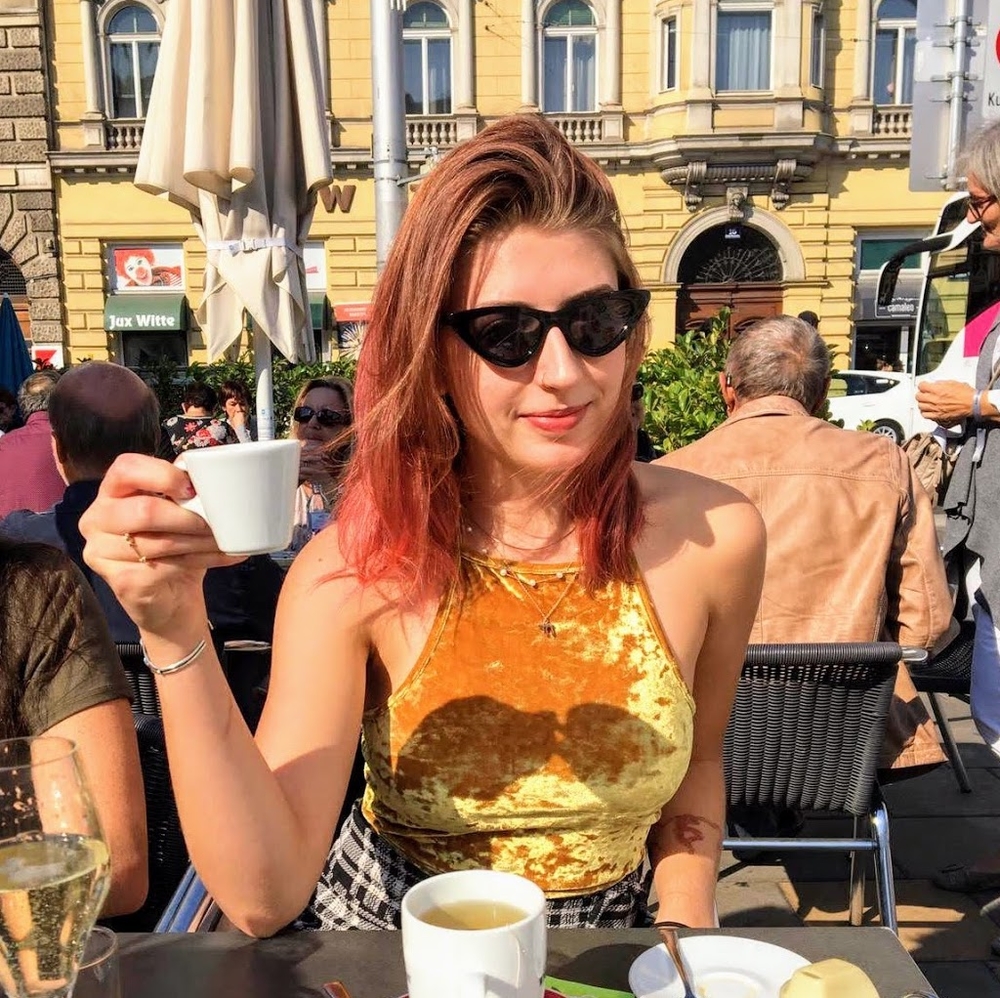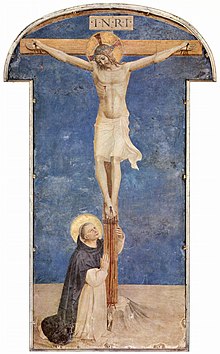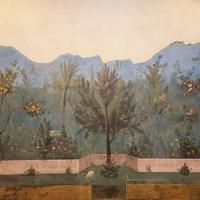More about Museo di San Marco
Works at Museo di San Marco

Sr. Contributor
The museum of San Marco is well worth a visit for its history and architecture as much as the multitude of masterpieces held within.
In 1438, the convent was in bad shape, having been caught in a large fire, and was given to Dominican Observants in an order from Pope Eugene IV. So it was something of a fixer-upper. Luckily, Cosimo de’ Medici had returned to power in Florence a few years earlier and took an interest in sprucing the place up.
He put his favorite architect, Michelozzo, who’d previously followed him into exile before said return to power, on the task of rebuilding it. The elegant library is arguably the highlight of his contributions to the restored convent. The library is now part of the museum and is home to a collection of priceless manuscripts from the Medici family.
Michelozzo’s efforts were really only part one of remaking the convent into the artistic marvel it is. The name most closely associated with the museum of San Marco is inarguably Fra Angelico. In life he went by Fra Giovanni, having chosen the name after joining a Dominican monastery. Posthumously, he’s best known as Fra Angelico. His fifteenth century fans gave him a few other names though, such as “The Angelic Painter” and “Angelic Doctor.”
In 1428, Fra Angelico’s career had really been taking off so he was already highly sought after in Florence before his most extensive commission came around. Fra Angelico was a member of the Dominican community that had taken possession of the convent so he was likely living there when Cosimo de’ Medici approached him to, well, basically paint the whole building. The museum can easily boast the largest collection of his works in the world. There’s forty-four of his frescos in the individual dormitory cells alone.
So every monk at the convent got a Fra Angelico original to decorate their meditative space. Several large frescos and altarpieces were also commissioned to decorate the shared areas such as the main cloister. Fra Angelico spent five years total on the convent, transforming it into a collective showcase of innovative early Renaissance art. With one exception, Fra Angelico never signed his work, but it’d have been valid for him to have signed the corner of the building itself. Maybe Cosimo de’ Medici would have thrown more commissions at him (there was still wall space remaining for future artists to add to, after all) but the monopoly on his time ended when the Pope stole him away to work on chapels in Rome.
Fra Angelico wasn’t the convent’s only resident to leave behind future exhibits for us modern day patrons to admire. One in particular, Fra Savonarola, became prior at the convent and gained a bit of infamy in the process. Fra Savonarola was known for his fiery public speeches and bonfires of vanities including items such as lavish dresses and art that was not sufficiently religious. According to Giorgio Vasari, he even inspired Botticelli to have some of his own paintings burned. Savonarola essentially took control of Florence away from the Medici family in 1495. Three years later, a mob stormed the convent and, well, his end was made to mirror his regard for pagan art down to the exact location of his bonfires. A plaque remains on the Piazza della Signoria to mark the spot. Items related to him are currently on display in his former rooms at the museum, including a timber that was salvaged from his pyre.
A few highlights of the art itself are The Annunciation arguably Fra Angelico’s most famous work that resides at the top of the stairway that leads to the former sleeping quarters. Also, Crucifixion, which is regarded as one of his masterpieces, can be found in the main cloister. You’ll also find a few paintings by Fra Bartolomeo, another convent resident, in the large refectory. His early work influenced young Raphael, and his later work was in turn influenced by said ninja turtle. In between, he’d been a fan of Fra Savonarola’s preachings and had contributed his own early sketches of nudes to the bonfire of vanities.
Sources
- Bekker, Henk. “Visit the San Marco Museum in Florence to See Fra Angelico Paintings.” European Traveler, March 10, 2022. https://www.european-traveler.com/italy/visit -the-san-marco-museum-in-florence-to-see-fra-angelico-paintings/.
- Finocchio, Ross. “Fra Angelico (Ca. 1345 -1455).” Met museum. The Met, October 2006. https://www.metmuseum.org/toah/hd/fang/hd_fang.htm.
- “Michelozzo.” Encyclopædia Britannica. Encyclopædia Britannica, inc. Accessed April 11, 2022. https://www.britannica.com/biography/Michelozzo.
- “San Marco Convent: A Milestone of the Renaissance.” Fantastic Florence. Fantastic Florence, November 29, 2016. https://www.fantasticflorence.com/2016/11/29/san-marco -convent-a-milestone-of-the-renaissance/.
- “San Marco Museum.” Florence Art Museums, May 14, 2020. https://www.florenceartmuseums.com/san-marco-museum/.
- Siegal, Nina. “Fra Bartolommeo Has His Moment.” The New York Times. The New York Times, October 6, 2016. https://www.nytimes.com/2016/10/06/arts/international/fra-bartolommeo-h….
- “Years at the Priory of San Marco.” Encyclopædia Britannica. Encyclopædia Britannica, inc. Accessed April 11, 2022. https://www.britannica.com/biography/Fra-Angelico/ Years-at-the-priory-of-San-Marco.

Contributor
Formerly the Dominican convent of San Marco, the San Marco Museum in Florence, Italy now holds an impressive collection of early Renaissance artworks.
Florence holds many secrets. Religious artworks with layers upon layers of meaning, ugliness hidden among lavish beauty, cults led by religious heretics. The San Marco Museum hosts all of these within its halls.
In the old convent, dormitories remain where each monk would study religious texts and contemplate the meaning of life for hours, even days on end. Each cell features a fresco depicting a scene from the Passion of Christ, painted by Dominican monk and artist Fra Angelico. The scene on the wall of the first dorm is the Annunciation which, if you don’t know anything about Christianity like me, is the moment when the angel Gabriel announces that the Virgin Mary would give birth to Jesus. The details, perspective, architectural elements, and symmetrical composition of Angelico’s Annunciation invoke a moment of divinity. [Side note--I want to take a moment to mention that even as a non-Christian, viewers can still appreciate the beauty and storytelling of religious artwork. As a Jewish woman myself, New Testament stories don’t resonate with me personally, but I can still learn something about history and art from studying work that depicts religious subject matter. This goes for any religion. For example, ancient Greek artwork to a modern audience illustrates myths, but during the time of their creation, this art represented their actual religious beliefs.]
As the visitor descends the hallway, elements of ugliness begin to creep into the scenery, with dead and wounded bodies laying beside heavenly beings. Juxtaposing beauty with ugliness serves to amplify the impact of said beauty. That’s why you have to choose only group pictures featuring people that are less attractive than you for your Tinder profile. Renaissance Florentine Humanist Leon Battista Alberti devised the concept that humans were not created equally, yet the virtues of one person balance out the deficiencies in another. Perhaps this concept can be applied to life itself. We all experience good and bad things, and would not appreciate the good without the bad that exists in our lives. Wow, being stuck inside all day due to quarantine has been making me, too, contemplate the meaning of life. Am I a monk now?
Towards the end of the hall, cells with blank walls formerly used for storage became used by monks as dormitories within the convent. Now, these are known as “Savonarola’s cells.” Named after the religious heretic and cult leader Girolamo Savonarola, these cells opposed the lavish beauty of Fra Angelico’s frescoes. Savonarola’s cells reflect the namesake’s desire to destroy any sign of evil, including anything that distracts from thinking about Jesus, from books to dice to bare butts. Pretty much everything fun. His cult stemmed from the belief in his “miraculous powers,” where miracles would happen when someone worshipped him in a moment of desperation. For his deviation from the norm, Savonarola ended up hanged AND burned at the stake, which seems a little redundant.
Art history serves to gain insight on life from a given cultural context. Walking through the Museum of San Marco allows the visitor to glimpse into the experience of a Dominican monk and gain an understanding of the belief systems established within 15th Century Florence. Just try not to get sucked into any cults while you’re there.
Sources
- Dall’Aglio, Stefano. "Domestic Prayers and Miracles in Renaissance Italy: The Case of Savonarola and His Cult." In Domestic Devotions in Early Modern Italy, edited by Corry Maya, Faini Marco, and Meneghin Alessia, 375-88. LEIDEN; BOSTON: Brill, 2019, www.
- “Firenze - Museo Di San Marco.” Direzione regionale musei della Toscana. Polo Museale della Toscana, November 2, 2016. http://www.polomusealetoscana.beniculturali.it/index.php?it/190/museo-d….
- Kent, Dale. Friendship, Love, and Trust in Renaissance Florence. Cambridge, MA: Harvard University Press, 2009.
- Scott, Joanna. "The Usefulness of Ugliness." Conjunctions, no. 37 (2001): 331-41. www.jstor.org/stable/24516354.
- Weissman, Ronald F.E. "Brothers and Strangers: Confraternal Charity in Renaissance Florence." Historical Reflections / Réflexions Historiques 15, no. 1 (1988): 27-45. Accessed May 26, 2020. www.jstor.org/stable/41298890.
Featured Content
Here is what Wikipedia says about Museo Nazionale di San Marco
Museo Nazionale di San Marco is an art museum housed in the monumental section of the medieval Dominican convent of San Marco dedicated to St Mark, situated on the present-day Piazza San Marco, in Florence, a region of Tuscany, Italy.
The museum, a masterpiece in its own right by the fifteenth-century architect Michelozzo, is a building of first historical importance for the city and contains the most extensive collection in the world of the works of Fra Angelico, who spent several years of his life there as a member of the Dominican community. The works are both paintings on wood and frescoes. The museum also contains other works by artists such as Fra Bartolomeo, Domenico Ghirlandaio, Alesso Baldovinetti, Jacopo Vignali, Bernardino Poccetti and Giovanni Antonio Sogliani.
San Marco is known as the seat of Girolamo Savonarola's discourses during his short spiritual rule in Florence in the late 15th century. Also housed at the convent is a famous collection of manuscripts in a library built by Michelozzo.

Check out the full Wikipedia article about Museo Nazionale di San Marco












